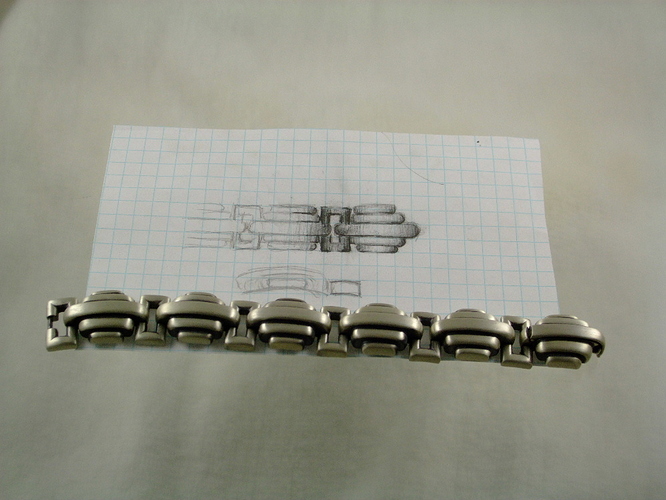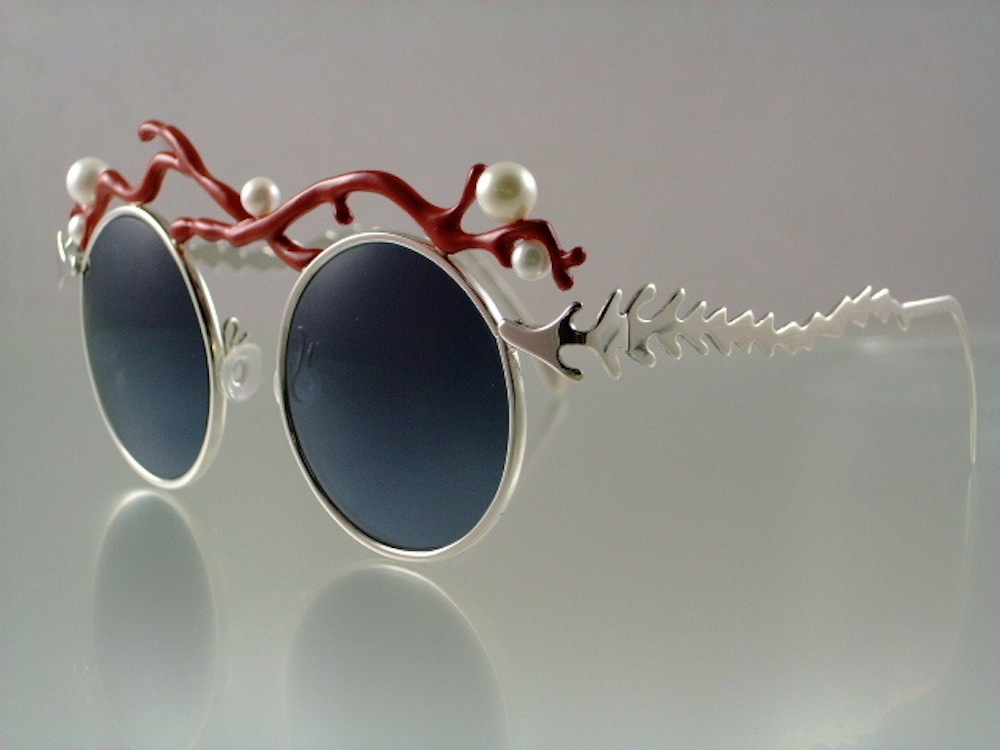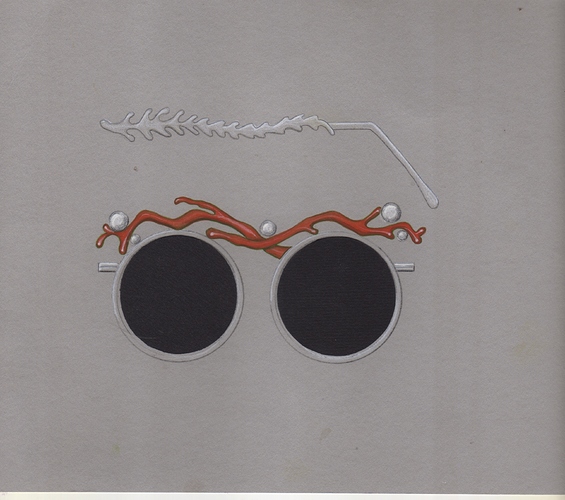Does anyone know of any good books, exercises, or tips on how to improve my design skills? Doesn’t have to be specifically for jewelry.
Hi,
I have two book suggestions for you. I really liked each of the below, for different reasons.
the main point I got out of this book (to paraphrase from page 177) is that the gap between studying design and creating design is wider than expected, and if the gap is not bridged by some means whereby the student can easily move from imitation to creation, it will be difficult, and a good way to bridge this gap is through variation. The book goes on to walk you through this process, as well as many others. My friend further enlightened me by suggesting that when I look at the things that I like, to try to discover “what” “it is” about these things that I liked…then taking what I learn and applying it to my work to make it my own, rather than a copy or derivative of someone elses work…he called it “finding your own voice” (which I am still trying to do!).
what I liked about this book is that it walked me through “Design Stages” (ie: design development, inspiration, research, model making, etc) , and talked about different “Elements Of Design” (ie: shape, texture, emotion, etc), and various “Creative Concepts” (ie: iconic, narrative, organic, etc)…
…all parts of the process…all things which I did not know to consider and had never stopped to think about, but which prompted me to try to open up my mind to deeper contemplation…
Books are awesome!
Julie
Yes! Thank you so much. I am definitely going to get those books.
Matt
I second what Julie suggested, both very good books!
If you want something a little more technical, these 2 are like a class in a book. Both have different approaches on how to teach drawing but both were helpful to understand perspective, lighting, metals and stones and 3D rendering using pencil and paper. When you have an idea and you want to sketch it out first it’s nice to be able to flesh out something that you can use to address construction challenges, composition and other aspects of the design that you wouldn’t think about unless you “see” it in front of you.
Matthew, one thing that I learned while doing a garden design degree course, was to simply look at everything that’s out there. I did the same for garden design as I do for jewellery design. Scour the internet and books for images that you like or that “speak” to you in some way, but don’t just collect images. It’s important to identify why you like what you like. It’s only by identifying features that you like, that can then lead to you using such elements to come up with designs of your own.
Look for balance and harmony in your designs. Think about what you leave out as much as what you put in - positive and negative space. A good design will have a good balance and harmony of its elements.
Draw, draw and draw some more. If you don’t like what you’ve drawn, identify why not. What’s not quite right with it? Don’t destroy the first drawing. Just put a cross next to it, or notes regarding what you don’t like and improve upon it. Keep tweaking it until you’re really happy with the design. Then maybe make some changes to come up with a few related designs that you could make into a range of pieces.
Helen
UK
Excellent thoughts, Helen.
Please excuse any typos-- curse my clumsy digits…
I have never considered myself great at design in an artistic sense. In a technical sense, like how to see all of the steps to assemble an item and the parts needed, I can do that easily.
For the artistic part, I bought a few different books, but a lot came from browsing through trade magazines and drawing the items I saw there. 25 years later I still struggle to draw as I am not a naturally talented in 2D art. But I still practice and work at it. Drawing saves information that a verbal description can not.
I have improved my bench drawings from incoherent scribbles to drawings that are recognizable as jewelry . So my advice is to follow the advice above that works for you, then just keep practicing.
I grew up with a father who was a professional Illustrator and Painter. I both make jewelry and teach jewelry rendering. The first book recommended the classic Dover book Jewelry Making and Design by Rose and Cirino is great for design ideas. The book Jewelry Illustration by Dominique Audette is a bit much. I own it and the first couple of chapters are OK but the rest is over kill. I wouldn’t buy it again. I have a few students who have bought it and they said the same thing. The one book I would highly recommend is a bit pricy but worth every penny. See if you can borrow it from your local library it the cost is too high. The Art of Jewelry Design by Maurice P Galli, Dominique Riviere, and Fanfan Li. It covers pretty much everything you’ll need to know about how to design and render jewelry.
Custom jewelry is not price sensitive it’s TRUST sensitive. If you can draw something that looks realistic in front of clients they then trust you to be able to make the piece that looks just like the drawing. It’s a done deal. All you have to do at that moment is ask them if they want to pay wth cash or a credit card.
I have two rendering styles. The quick pencil sketch in black and white for over the counter sketches done in front of the customer. I only do a top and a side view. No 3/4 perspective needed. Time is of the essence. Clients get bored pretty quickly. I can do a realistic looking image of a ring in about 15 minutes while chatting with clients. When you can draw something that jumps off the page wth shading and highlights and a stone that looks like it sparkles you can close the sale almost every time. Then I have the slow method. If it’s an important piece like over 10-15 thousand dollars I then slow down and take an hour or more the do a more elaborate color rendering. CAD is great, but it takes too long. The old houses like Van Cleef and Arpels and Cartier still do the sketches by hand. If they get a call or email from a store of theirs in the the US the give the info to their illustrators in Europe and can get back an image via the internet pretty quickly.
This kind of service makes the clients feel really special.
And finally and most importantly NEVER EVER let your clients or the store you are working with have a copy of your design. It will get shopped around to the cheaper shop every single time. Trust me on this. If it’s an important customer I will on occasion give them the rendering after the piece is finished and paid for. They love that.
Have fun and design and make lots of jewelry. After all paper and pencil are much cheaper than trying out ideas in precious metals and gems.
Below find attached a quick pencil sketch and the finished product.
Jo
i second Jo Haemer’s book suggestion- the art of jewelry design. it is a great addition to a jewelry library.
julie
Maurice, Dominique, and Fanfan did two other books in the same series:
“Designing Jewelry: Brooches, Bracelets, Necklaces & Accessories” and
“Creative Variations in Jewelry Design .”
Sadly Maurice is no longer with us, having passed away in 2016. Dominique has taken over Maurice’s post as head designer at Harry Winston. Fanfan, at the time they wrote these books, was head designer at Bulgari’s New York store. From there she moved to Van Cleef in Paris, where I believe she still is.
Thank you Helen (and everyone else who provided input)
Such a simple idea of identifying the elements of what I like and more so of what it is that I don’t like. I definitely am lacking in that area. Sometimes all I can do is just see something and know I like it or don’t, but not really put my finger on what it is or why. I think that’s a great thing for me to focus on to really gain understanding and grow. I just received the books that were recommended, so now it’s time to put pencil to paper!
Matt


